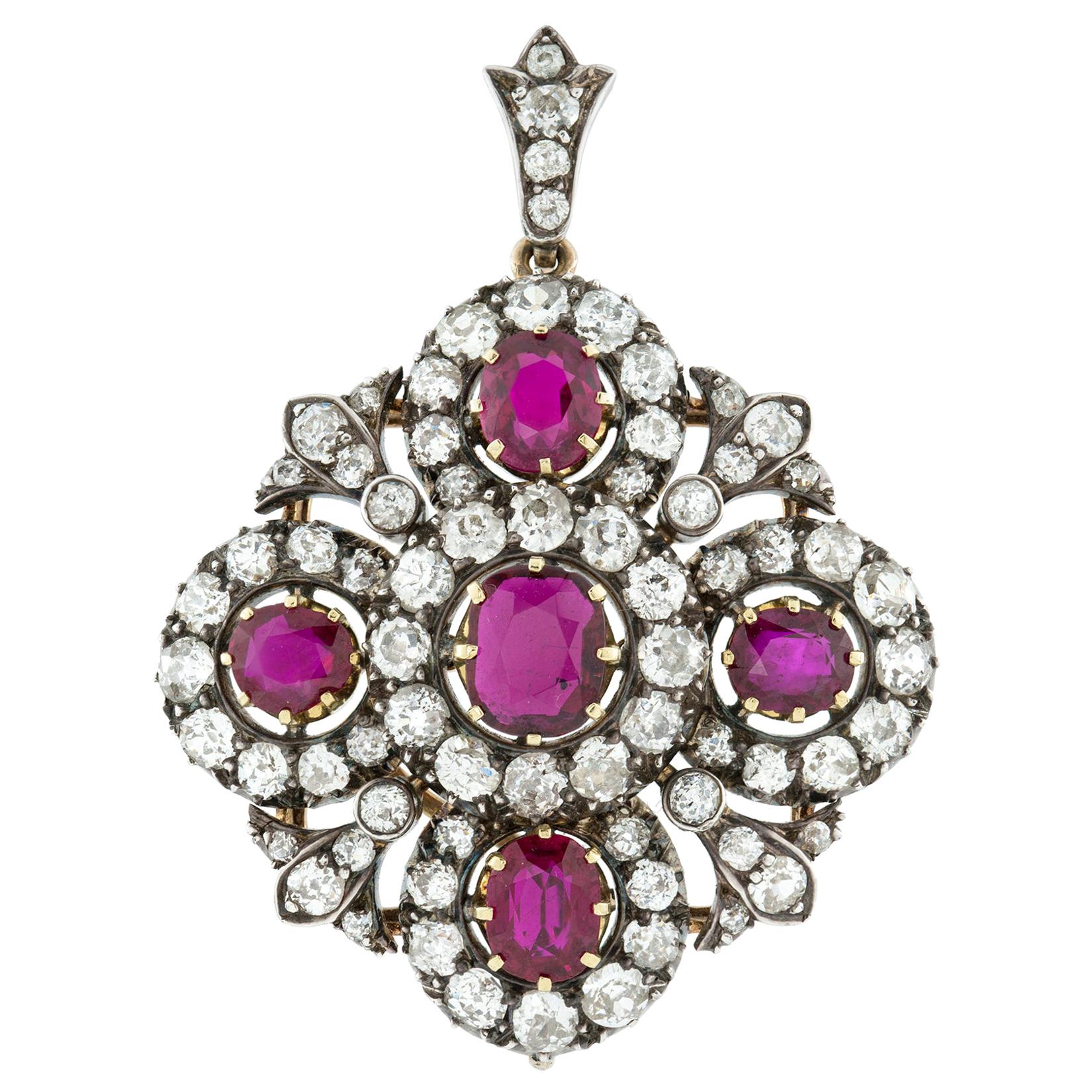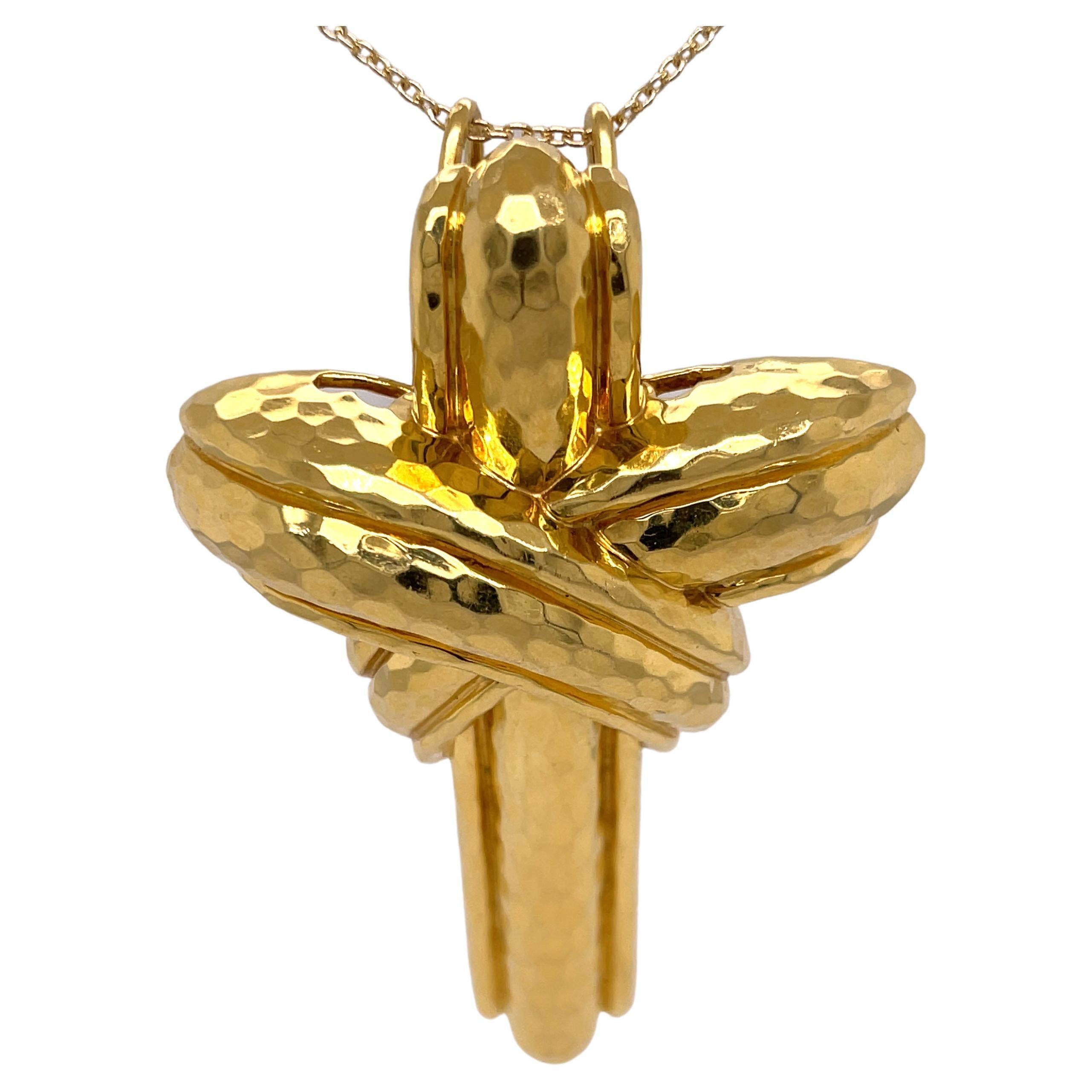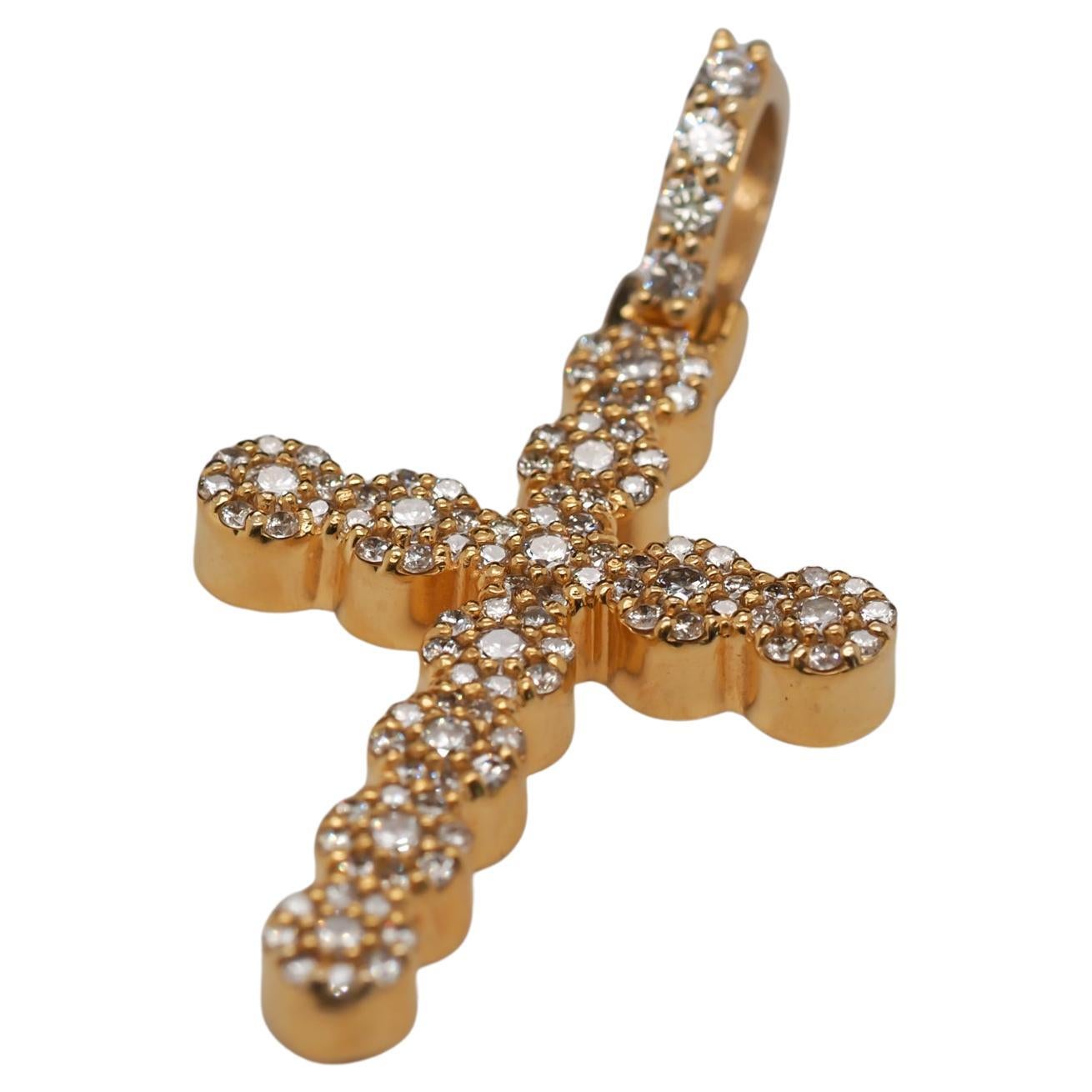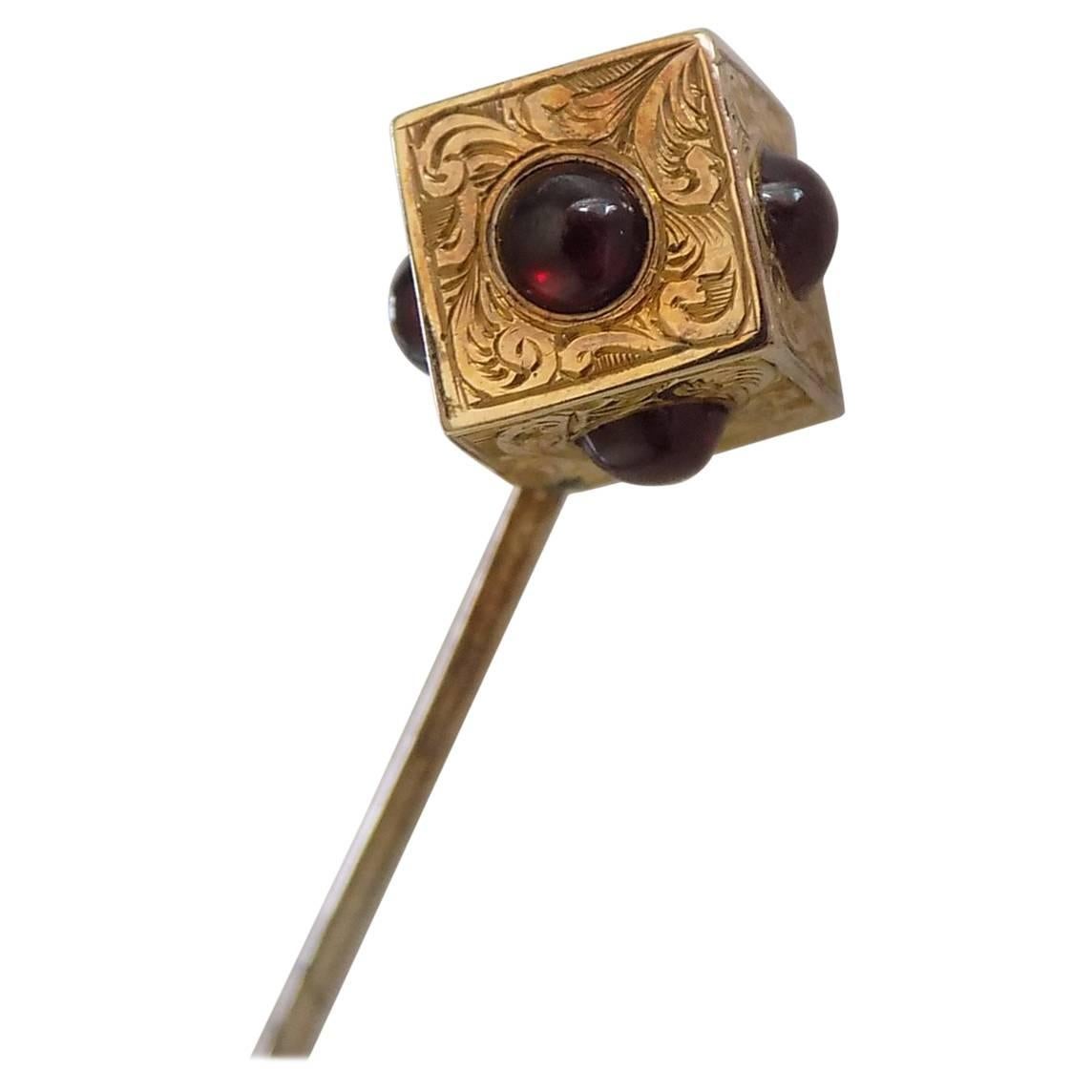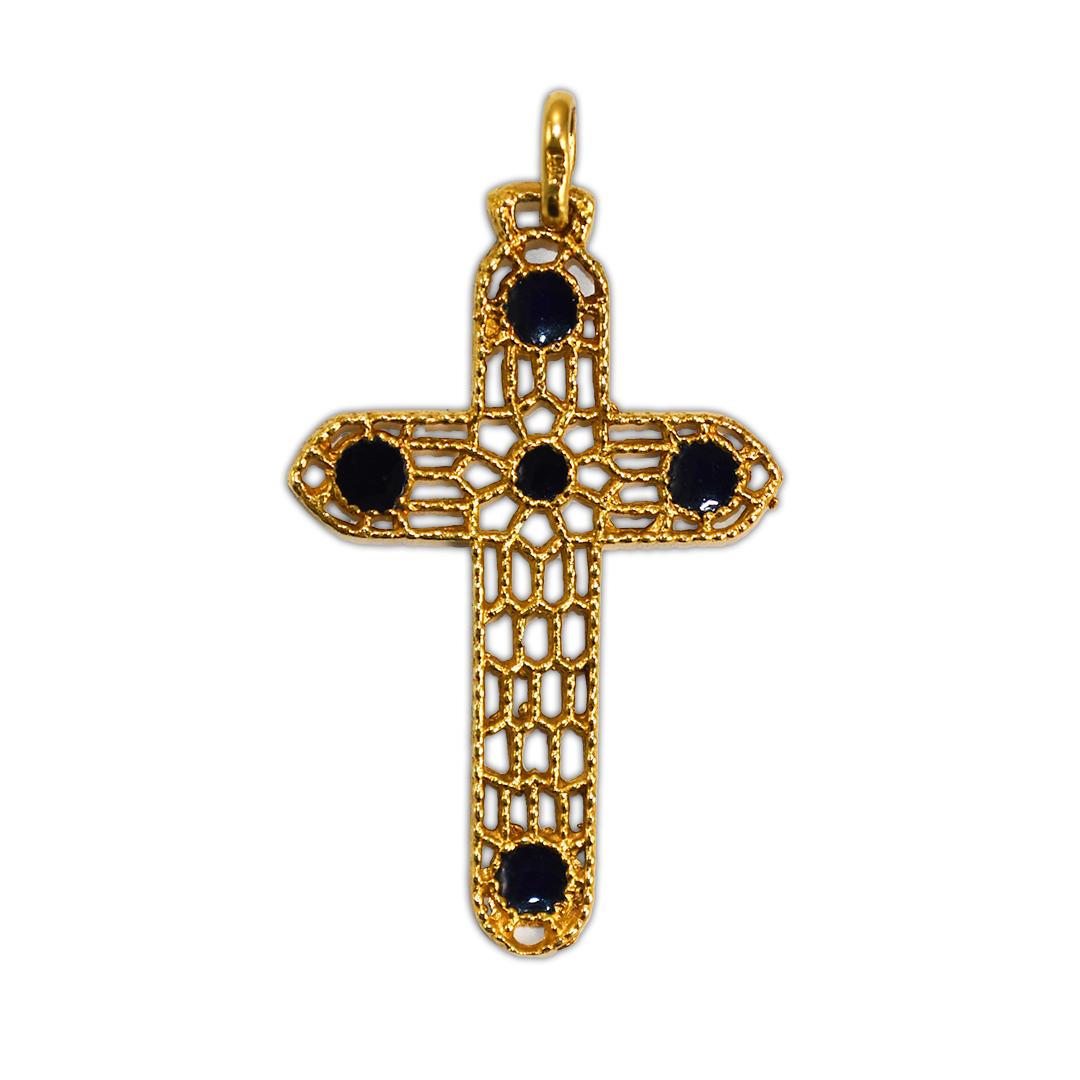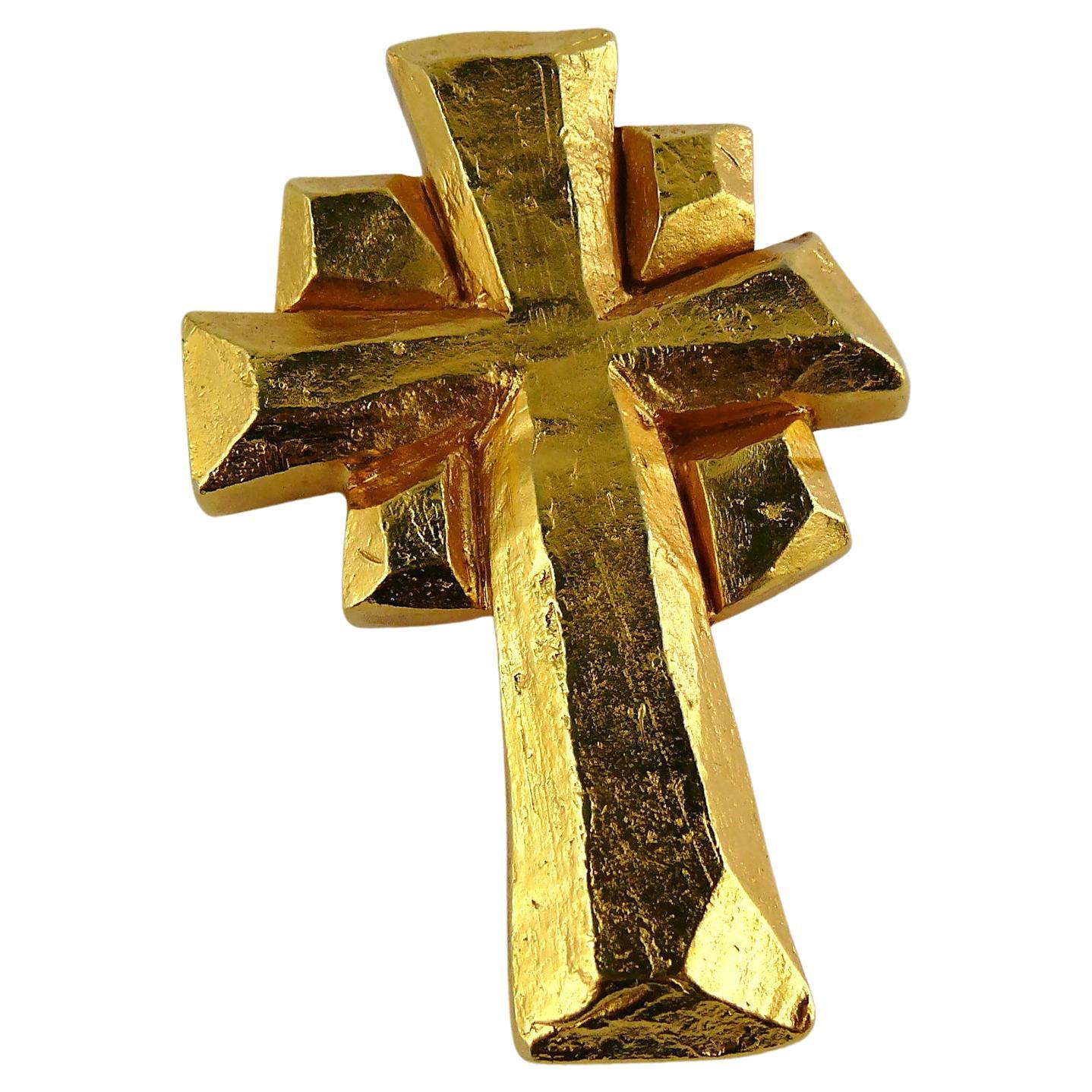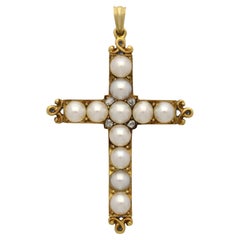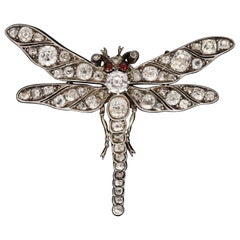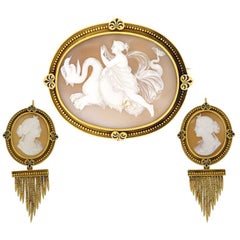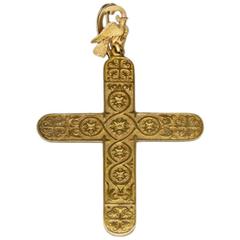
John Brogden Victorian Gold Cross Pendant
View Similar Items
Want more images or videos?
Request additional images or videos from the seller
1 of 2
John Brogden Victorian Gold Cross Pendant
About the Item
- Creator:John Brogden
- Metal:Gold
- Place of Origin:United Kingdom
- Period:1980-1989
- Date of Manufacture:Circa 1985
- Condition:
- Seller Location:London, GB
- Reference Number:Seller: PEN 1212171stDibs: LU52969602
About the Seller
5.0
Recognized Seller
These prestigious sellers are industry leaders and represent the highest echelon for item quality and design.
Gold Seller
These expertly vetted sellers are highly rated and consistently exceed customer expectations.
Established in 1849
1stDibs seller since 2009
44 sales on 1stDibs
Typical response time: 1 hour
More From This SellerView All
- Victorian Antique Pearl And Diamond 18ct Yellow Gold Cross Pendant Circa 1890Located in London, GBA Victorian pearl and diamond cross pendant circa 1890. This Latin style cross is set with natural saltwater half pearls with four small old cut diamonds embellishing the centre. The...Category
Antique Late 19th Century English Victorian Pendant Necklaces
MaterialsWhite Diamond, Natural Pearl, 18k Gold
- Late Victorian Antique Diamond and Demantoid Garnet Frog Brooch/Pendant Ca.1890Located in London, GBA wonderful late Victorian demantoid and diamond frog brooch/ pendant, circa 1890, the frog formed in silver on gold with gold feet and pavé set throughout with bright and lively old...Category
Antique Late 19th Century English Brooches
MaterialsDiamond, Garnet, 18k Gold, Silver
- Victorian Antique Diamond Dragonfly Brooch circa 1870sLocated in London, GBA beautiful Victorian diamond dragonfly brooch, c.1870s, the openwork design realistically modelled in silver and gold depicting a dragonfly i...Category
Antique Late 19th Century English Brooches
MaterialsDiamond, Gold, Silver
- Victorian Antique Diamond And Natural Pearl Shell Brooch Circa 1880Located in London, GBA beautiful Victorian diamond and pearl shell brooch c.1880s, the three-dimensional scallop shell of oval outline set throughout with old European brilliant cut diamonds in silver ba...Category
Antique Late 19th Century British Victorian Brooches
MaterialsDiamond, Natural Pearl, 18k Gold, Silver
- Victorian circa 1870s Fine Heart Shaped Diamond PendantLocated in London, GBA charming Victorian diamond heart shaped pendant c.1870s, centred with a pear shaped old-cut diamond surrounded by seven old European cut diamonds within a border frame of old mine ...Category
Antique Late 19th Century English Pendant Necklaces
MaterialsWhite Diamond, 18k Gold, Silver
- Cartier 18ct Gold And Diamond Hummingbird Brooch Circa 1960sBy CartierLocated in London, GBA charming gold and diamond stylised hummingbird brooch by Cartier c.1960s, the body finely modelled in 18ct yellow gold with a textured finish and carefully formed feathers, the bea...Category
Mid-20th Century British Brooches
MaterialsWhite Diamond, 18k Gold
You May Also Like
- Impressive Victorian Gold Cross Pendant/BroochLocated in Wheaton, ILThis impressive antique Victorian gold cross complete with an elaborate raised floral, leaf and ivy design exquisitely sculpted from yellow, green...Category
Antique Late 19th Century Victorian Brooches
MaterialsGold
- Victorian Archaeological Revival Gold Cross Pendant BroochLocated in London, GBA Victorian archaeological revival gold cross pendant brooch, the Greek cross composed of five square panels, each square bearing to the ce...Category
Antique Mid-19th Century British Etruscan Revival Pendant Necklaces
MaterialsGold, 18k Gold, Yellow Gold
- John Brogden Shell Cameo Brooch and Earrings, English, circa 1870By John BrogdenLocated in London, GBAntique shell cameo brooch and earrings by John Brogden, English, circa 1870. A yellow gold suite of jewellery, the brooch composed of a horizontally situated oval Bull’s Mouth shell cameo of the Greek goddess Selene riding a serpentine dragon in a rubover collet setting, encircled by a conforming frame of gold beading and twisted gold wire punctuated with four gold palmette form plaques engraved and decorated with dark blue enamel and placed at the cardinal points, the reverse mounted with a hinged pin and scroll clasp, the earrings each composed of a vertical oval Bull’s Mouth shell cameo engraved with a bust length portrait of Selene with crescent-set headdress, encircled by a conforming frame matching that of the brooch with the addition of a pendant decoration composed of a horizontal bar of gold beading and twisted gold wires suspending gold link chains graduated from centre and ending in conical gold elements, the reverses mounted with French wire fittings, all in a fitted red leather case, the interior marked ‘FIRST CLASS PARIS MEDAL/ 1855.1867.1851/ PARIS FIRST CLASS & LONDON PRIZE MEDALS/ JOHN BROGDON/ Goldsmith/ MANUFACTORY/ 16, Henrietta St. Covent Garden/ London’. The cameo—defined as a gem, usually either a mineral or a shell, upon which a design has been carved in relief—is believed to have originated in Hellenistic Greece, during the third century BC. These miniature sculptures, at that time confined to the medium of hardstone, are thought to have been made with the primary purpose of personal adornment. The same practice of mounting cameos in jewellery was then continued by the Ancient Romans, and they are known to have been worn by many a Roman emperor. After the fall of Rome the fashion for cameos went into a decline, until it was again revived during the Renaissance period, brought about by a keen interest in the ancient world. At this time both antique and contemporary cameos were mounted in jewellery, as well as collected as objet d’art. The art of cameo cutting was revived in Italy, where it would remain a centre for the coming centuries. Again there was a lull in interest in carved gemstones, until the Neoclassical revival of the eighteenth century, largely stimulated by the discoveries of the ancient Roman cities of Pompeii and Herculaneum. As with the Renaissance, antique specimens were generally prized over modern cameos, and the worldliest men in Europe held them among their collections of art and antiques. That said, carving centres in Rome and Torre del Greco (near Naples) in Italy were established in response to the demand of the Grand Tourists, who travelled to Italy and Greece to become educated in the wonders of the ancient world. It was at this time that shell cameos, mostly made in Torre del Greco due to its proximity to the sea, became more popular, owing to the relative ease in carving shell over hardstone. In addition to Rome, hardstone cameos also became a specialty of Idar Oberstein, Germany, which had a long history with both the gem mining and cutting trade. In a shift away from the collector’s cases of the previous century, the nineteenth century saw a strengthening in the fashion for wearable cameos. After the Empress Josephine donned a cameo-set suite of jewellery at the coronation of Napoleon in 1804, cameo jewellery became all the rage. Napoleon played a further hand in promoting the art by establishing a gemstone carving school in Paris, inspired by his appreciation for the arts of the ancient world. By the mid-nineteenth century shell cameos, in part due to their lightness compared with hardstone cameos, were the height of fashion. Large shell cameos as well as hardstone cameos were set into contemporary mounts, often as suites of jewellery. Some of the best cameos of the nineteenth century—carved by a select group of recognized carvers—were set into revivalist mounts, corresponding to the subject matter. In Victorian England cameo jewellery was particularly prized, due in part to the fact that the Queen owned and wore a number of cameo jewels. One example which can often be seen in official portraits is the Badge of the Order of Victoria and Albert, carved by Tommaso Saulini of Rome, who also produced cameos for the maker of the present suite, John Brogden. To meet demand some carvers set themselves up in London, including William Schmidt, a German carver from Idar Oberstein, who produced cameos for top London jewellers, including Brogden, Carlo Giuliano and Child & Child. In fact, Schmidt purports to have been the first to carve cameos out of opal, which Brogden reportedly displayed in the Paris Exhibition of 1878. An extant example, now in the collection of the British Museum, was set by the Giuliano firm. Regarding subject matter, cameos throughout time have been largely figural, from bust length profile portraits to scenes with multiple full-length figures, and sometimes animals. Ancient Greek and Roman cameos often depicted mythological scenes as well as contemporary figures. During the Renaissance, mythological scenes were popular, often taken directly from ancient sculpture, as well as portraits of notable contemporary figures. During the eighteenth and nineteenth centuries, due to the revivalist styles, both Renaissance and Classical subjects were copied and set into matching (and sometimes unmatching) revivalist mounts. From the Renaissance through the Victorian era, being able to recognize the source of the carving in a cameo was a mark of erudition, revealing in the wearer knowledge of Classical art. As mentioned, the present cameo parure...Category
Antique 1870s English Victorian Brooches
MaterialsYellow Gold
- Victorian Ruby and Diamond Cross Pendant BroochLocated in London, GBA Victorian ruby and diamond cross pendant brooch, the central cushion-cut ruby weighing 1.02 carats, surrounded by a cluster of old-cut diamonds, the arms set with four oval faceted...Category
Antique 1880s Unknown Victorian Pendant Necklaces
MaterialsDiamond, Ruby, Yellow Gold, Silver
- Henry Dunay Yellow Gold Shiny Faceted Gold Cross PendantBy Henry DunayLocated in Dallas, TXHenry Dunay 18K Yellow Gold Shiny Faceted Gold Cross Pendant. Stamped Dunay 18K 750 B6198. Chain not included.Category
Vintage 1980s French Modern Brooches
MaterialsYellow Gold, 18k Gold
- Early Victorian Topaz Set Cross BroochLocated in London, GBAn early Victorian topaz set cross brooch, the brooch in the form of a cross with nine round faceted topazes and pear shape faceted topazes in between ...Category
Antique Mid-19th Century British Early Victorian Brooches
MaterialsTopaz, Rose Gold
Recently Viewed
View AllMore Ways To Browse
Celtic Cross Pendant
Gold Celtic Cross Pendant
Vintage Celtic Brooch
Vintage Celtic Brooches
Vintage Celtic Cross
Gold Celtic Brooch
Celtic Cross Gold
Platinum Dragonfly
Antique Bone Brooch
Cameo Lava Brooch Victorian
Riker Bros Jewelry
Riker Bros
Antique Butterfly Wing Brooch
Birks Pearl
Riker Bros Art
Antique Norwegian Silver Brooch
Coral 18 K Brooch
Psyche Brooch



